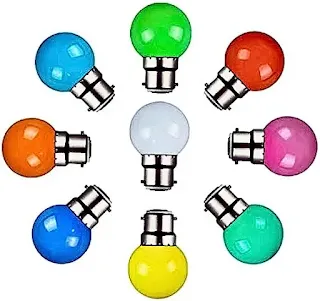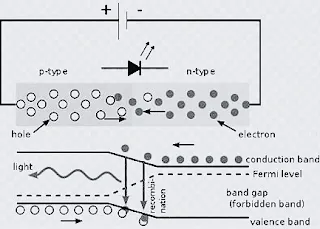INTRODUCTION
 |
| Zero Watt Bulbs |
I would like to say just to be patient and read the blog till the because in this blog, I am going to reveal everything about them from their working to their advantage. So, you should definitely stick till the end.
WHAT ABOUT ITS INVENTOR ?
 |
| Nick Holonyak |
 |
| Oleg Losev |
While the traditional bulbs (Tungsten Bulbs) were made by Thomas Edison , these low intensity incandescent bulbs (LEDs) or Zero Watt Bulbs were made by four great inventor Nick Holonyak, Oleg Losev, James R. Biard, H. J. Round in around 1927.
 |
| James R. Biard |
 |
| H. J. Round |
WHY ARE THEY KNOWN TO BE CALLED AS “ZERO WATT BULB” ?
Unfortunately, as of
now, we know that this so called ‘zero watt’ bulbs consume 12-15 watts of power
on average. But in the older days, when people kept all the electrical
appliance off at night, they used to turn on this bulb for whole night which
the older electromagnetic meters could not measure its power consumption which
is this low.
And thus, the meter
indicated the signal for ‘Zero’ watt and power. And this is how it was known to
be called as ‘Zero watt” bulb as of now.
So, they were termed as the zero watt bulb not because they literally consume
no power but it was due to the inability of the older electromagnetic meters
which could not precisely measure its power consumption.
WHAT IS ITS IMPACT ON THE ENVIRONMENT ?
The advanced
electromagnetic meters are not as weak as the older meter as they are capable
of measuring the power consumption of this low intensity incandescent bulbs or
I should rather say “Zero watt bulbs”. Now if I take practicality in my hand
and do some calculation as follows and take one example you will see how it
works.
Assume a person named
‘Ramesh’ in India kept all the electrical appliance off at night, and to turn
on this bulb for whole night. Assuming that average house hold has 2 low
intensity incandescent bulbs in the house and its power consumption of 15
watts. And assuming the average electricity cost per unit in India to be 6.090
as per the reports of GlobalPetrolPrices.com and running time of at least 10
hours.
Here are some
calculations :
Power consumption of low
intensity incandescent bulbs: 15 watts
Run Time: 10 hours
Units consumed per year
will be: (365 * 15 * 10)/1000 = 54.75 kWh
And for two low
intensity incandescent bulbs, it will be : 54.75 * 2= 109.5 kWh
Thus, the annual amount
of cost to be paid (Taking average electricity cost per unit in India to be
6.090) = 666.855 Indian rupees which
equivalent to 8.0643 USD.
Now, I took the person
to live in India but you could be anywhere so just adjusting the average
electricity cost per unit as per your country and do the calculations.
These whole calculations
I don’t think seems economical to us and beneficial to the environment at all,
or is it ?
Working Principle
Zero Watt Bulb a.k.a. LEDs are just semiconductor devices that emit electromagnetic radiation in visible ranges (visible light) when an electric current passes through its circuit. It’s based on the phenomenon known as ‘Electroluminescence’. Electroluminescence is phenomenon in which whenever an electric current is passed through a material , it tends to emit light. They are typically made up of material used in semiconductor chips like Gallium Arsenide (GaAs) or Gallium Nitride (GaN) or Gallium Arsenide Phosphide (GaAsP).
 |
| Working of a LED (Zero Watt Bulb) |
LEDs consists of p-n junction where electroluminescence occurs. When a forward voltage is applied across the p-n junction the electrons in the n-type layer and holes which reside in the p-type layer come together at the junction and thus the process is called ‘Recombination’ where after they combine light rays are emitted.
Parts of a Zero Watt
Bulb (LED) Bulb:
- The Semiconductor (LED) Chip
- Encapsulation: It is protection given to the LED to protect themselves
- Heat Sink
- Base
- Connector
- Drive Circuitry: which enable the bulb to get required/desired amount of voltage. Nor less neither more.
- Some optical elements like diffusers and reflectors
COMPARISION WITH TRADITIONAL BULBS (Advantages)
- Energy Efficient: Zero watt bulbs are more efficient the traditional bulbs (Tungsten Bulbs). They use up to 80% less energy than the Tungsten Bulbs.
- Lifespan: Tungsten bulbs have a limited lifespan and typically last for around 1,000 to 2,000 hours while the zero watt bulbs have a much longer lifespan and can last up to 25,000 hours or more, reducing the need for frequent replacements.
- Heat generation: Tungsten bulbs generate a significant amount of heat while emitting light, which can be wasteful as well as hazardous. In contrast to this, a Zero watt bulb produces very little heat, making them safer to use and reducing the strain on cooling systems. My professor in my college once told me a story about how he dried up clothes whenever Monsoon Season hits India. He told me that he used to let the Tungsten bulb sun overnight and he kept the wet clothes hanged to a rope near the Tungsten bulb. So as to use the heat energy of the Tungsten bulb to dry the clothes. His clothes perfectly dry over a night due to the heat generated by the bulb, but the only downfall of this technique is the cost of energy consumed by the bulb which he used to kept running over night, he told it came around 600rs(~6 USD) per month just for the Tungsten bulb, I repeat its just for the tungsten bulb. But he told it helped him so much.
CONCLUSION
In conclusion, Zero Watt Bulbs provide
a more energy-efficient and durable lighting solution compared to traditional
bulbs (Tungsten bulbs). However, it is essential to consider the
overall energy consumption and cost associated with their usage to make a good
decision. Zero Watt Bulbs can contribute to energy savings and a reduced
environmental impact, but it is had to be considerate about our preferences and
our needs.
REFERENCES :
